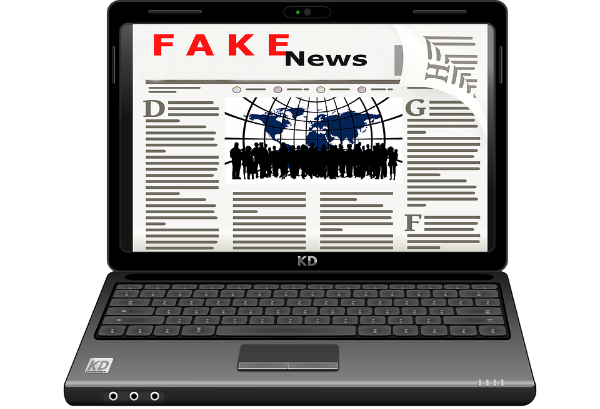A Failure of Media and Information Literacy
 We heard a lot about the "fake news" that we (Americans) were consuming in 2016. The election of President Trump brought the topic to the top of the news feeds.
We heard a lot about the "fake news" that we (Americans) were consuming in 2016. The election of President Trump brought the topic to the top of the news feeds.
Fake news is a new entry for Wikipedia which describes it this way: "Fake news is a type of hoax or deliberate spread of misinformation in social media or traditional news media with the intent to mislead in order to gain financially or politically. If often employs eye-catching headlines or entirely fabricated news-stories in order to increase readership and online sharing."
Though some fake news is about making a profit in the same way that clickbait does by ad-revenue generated compensation, some of it is to forward a political or social agenda.
Some fake news sources are anonymously hosted or lack known writers and publishers (which makes it more difficult to prosecute sources of fake news for libel or slander). It is hardly a new kind of news.
I wrote earlier this year about fake news and information literacy, but the more I read about it, the less optimistic I am about the situation improving.
Our history courses taught us in earlier decades and centuries about yellow journalism and political propaganda, and some of the same strategies are used. But the media, 24-hour news' appetite for content and especially the Internet and social media have made it so much easier to produce and distribute it to the world.
As an educator, I'm anxious about the spread of fake news, and I wonder if the current commitment, or lack thereof, to media literacy programs is enough to combat its spread.
We have been teaching at all grade levels for a long time about fact-checking and verifying the accuracy and veracity of sources. We did it as educators with print and we adapted it in the digital and Internet age. But I don't think it's working. It is not only the younger generations that seems to be taken in by fake news, but also older generations who are long out of the classroom.
Danah Boyd is a Principal Researcher at Microsoft Research and the founder/president of Data & Society. In her book, It's Complicated: The Social Lives of Networked Teens, she examines how "...society fails young people when paternalism and protectionism hinder teenagers’ ability to become informed, thoughtful, and engaged citizens through their online interactions."
I remember well trying to get my fellow faculty to examine, use and teach students how to wisely use Wikipedia back in 2001. It was a tough sell. Boyd has seen the results. She says "Students I met were being told that Wikipedia was untrustworthy and were, instead, being encouraged to do research. As a result, the message that many had taken home was to turn to Google and use whatever came up first. They heard that Google was trustworthy and Wikipedia was not. Understanding what sources to trust is a basic tenet of media literacy education. When educators encourage students to focus on sourcing quality information, they encourage them to critically ask who is publishing the content. Is the venue a respected outlet? What biases might the author have? The underlying assumption in all of this is that there’s universal agreement that major news outlets like the New York Times, scientific journal publications, and experts with advanced degrees are all highly trustworthy."
The time is now to review how we teach media literacy.
Am I hopeful? No. Not if we continue teaching it the way we have in the past few decades.
Danah Boyd feels "The path forward is hazy. We need to enable people to hear different perspectives and make sense of a very complicated — and in many ways, overwhelming — information landscape. We cannot fall back on standard educational approaches because the societal context has shifted. We also cannot simply assume that information intermediaries can fix the problem for us, whether they be traditional news media or social media."
Boyd writes that "As a huge proponent for media literacy for over a decade, I’m struggling with the ways in which I missed the mark."
What needs to change? A lot. She says that we need to "build the social infrastructure necessary for people to meaningfully and substantively engage across existing structural lines." I don't know how we do that. I don't know anyone who has a new approach in place. But I agree with her that we can't ignore hate speech, fake news, biased content and propaganda online and expect that things will get better.
Trackbacks
Trackback specific URI for this entryThe author does not allow comments to this entry
Comments
No comments